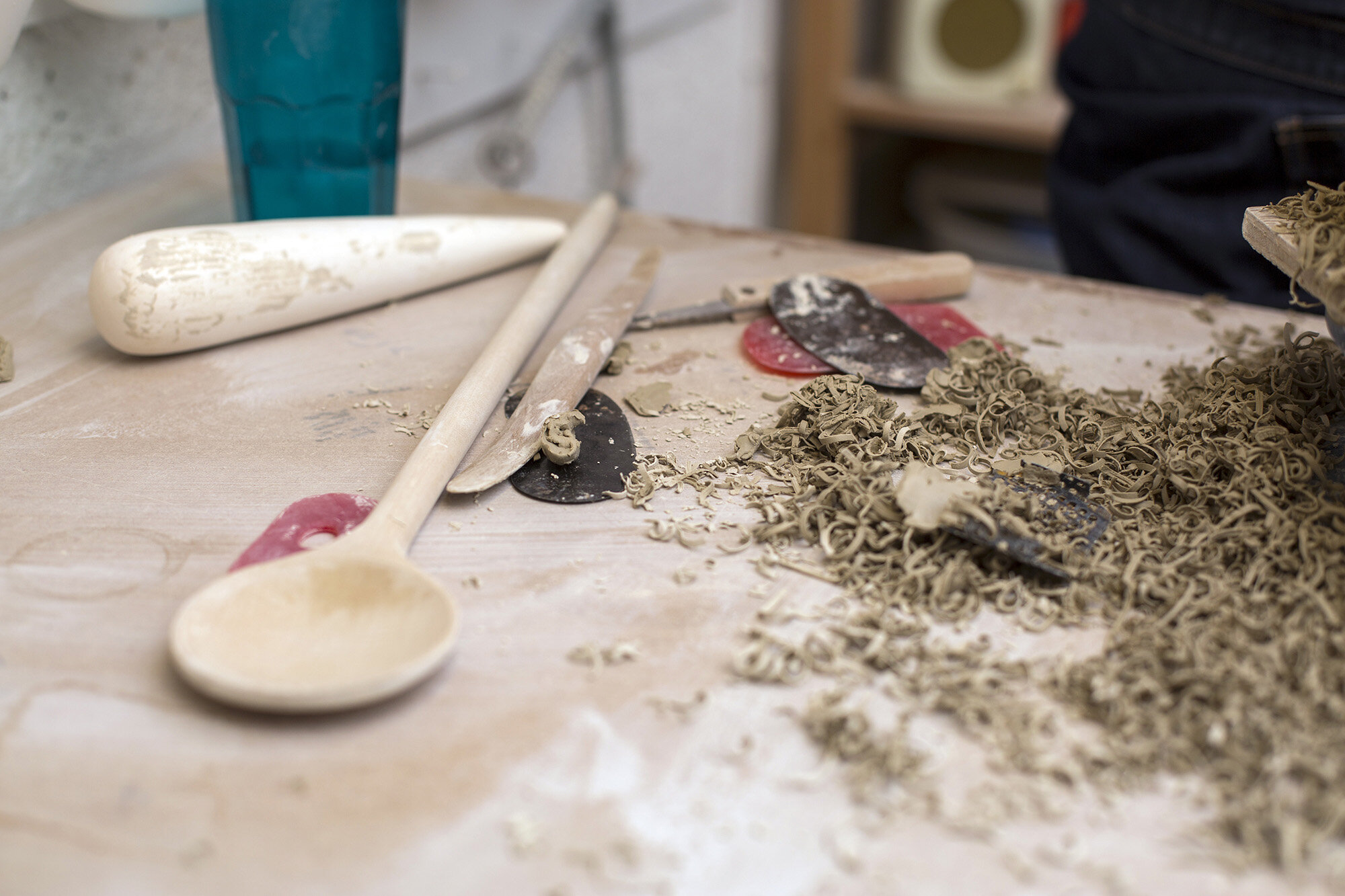
Q&A | AUG 2018
Maria Wojdat
What do you do?
I make sculptural vessels and wall pieces to commission and for sale through art galleries, exhibitions and online.
Why do you do it?
My early creative training and work was in graphic design. This was a time when the industry was changing from drawing boards to computers and, as my work became more computer-based, I realised I missed using my hands and making things. That realisation led me to ceramics and eventually an MA in ceramic design at Bath Spa University.
Inspiration?
Inspiration comes from many and varied sources – I particularly love modernist design and architecture and in contrast, the spontaneity in abstract expressionist painting, particularly Robert Motherwell, also minimalist sculpture, such as Donald Judd and Richard Serra.
My training and work as a graphic designer is also a major influence – the precision I learned when creating artwork on a drawing board, combined with the organic nature of clay is the basis of my ceramic work. Line has always been important – from my early years watching my father, a structural engineer, draw perfect black lines to my own as a graphic designer, producing artwork for print. Now I attempt to create equally perfect lines in three dimensions around a form. It’s an exploration into the balance between spontaneity and control and the relationship between the geometric and the organic.
Challenges?
There are always technical issues in developing new work. Clay must be one of the most difficult materials to work with, although solving these challenges adds to my motivation. Making my voice heard in a crowded market is another challenge and one where general perceptions can be limited about what a ceramic vessel can, or should be. Ceramics are not necessarily about functionality, they have a role as art objects too.
Pleasure or pain projects?
It would have to be a large commission I completed last year. An art consultancy commissioned me to create an installation of pieces for a large recess in their client’s home. My client was experienced at commissioning and seemed clear about what she wanted. But as we got into the project that wasn’t the case. It took a lot of patient listening and re-working of ideas and in the end making and re-making to reach what she really wanted. In the end it was very successful and pushed me to be more inventive in how I represented my ideas and, in getting her to visit my studio and ‘play’ with some of my pieces, I was introduced to a different perspective on my work which has also opened up new ideas.
My graphic design training is a major influence on everything from clean-lined forms to surface treatment – it’s not a traditional pottery approach.
What does quality look like?
I’m largely self taught, learning by looking at books and through trial and error.
My work is hand-built and the forms and colours have developed over many years, constantly thinking and trying new ways to make my pieces better. The process itself is one of refinement and close attention to detail, scraping and sanding, scraping and sanding, again and again until the piece feels right.
Do you ever break the rules?
I think because I didn’t have a formal pottery training I never learned the rules.
I start from the point of having an idea and then working out how to realise it. I’ve learned the skills I need to make what I want to make and I’m adding to those all the time, but it means I’m not working from a traditional standpoint and maybe that makes me approach projects from a different creative perspective.
What makes you different?
My graphic design training is a major influence on everything from clean-lined forms to surface treatment – it’s not a traditional pottery approach.
How do you keep it fresh?
I have a natural curiosity in the new and the next thing – so I’m always looking at what the latest trends are in all sorts of areas – from fashion to ceramics and art. They can be incorporated into my work or influence the next idea which, in turn, will inspire a new area of experimentation.
How does Bath influence your work?
Having spent several years working on my own in a rural area I was looking for somewhere with a community of other artists and makers with good transport links to London. I’ve found clients are very happy to come to Bath for the day or a short break to do a studio visit and it has been great to be able to offer that.
Dreams for the future?
Taking a studio in Bath has been a good move for me, so I’m planning to stay in Bath and continue developing my work. I’d also like to share what I’m doing with a wider audience and to continue to be inspired by new and innovative projects.
Interview taken from the Made in Bath book.
To discover more makers and read their stories, get a free download of the book here.











